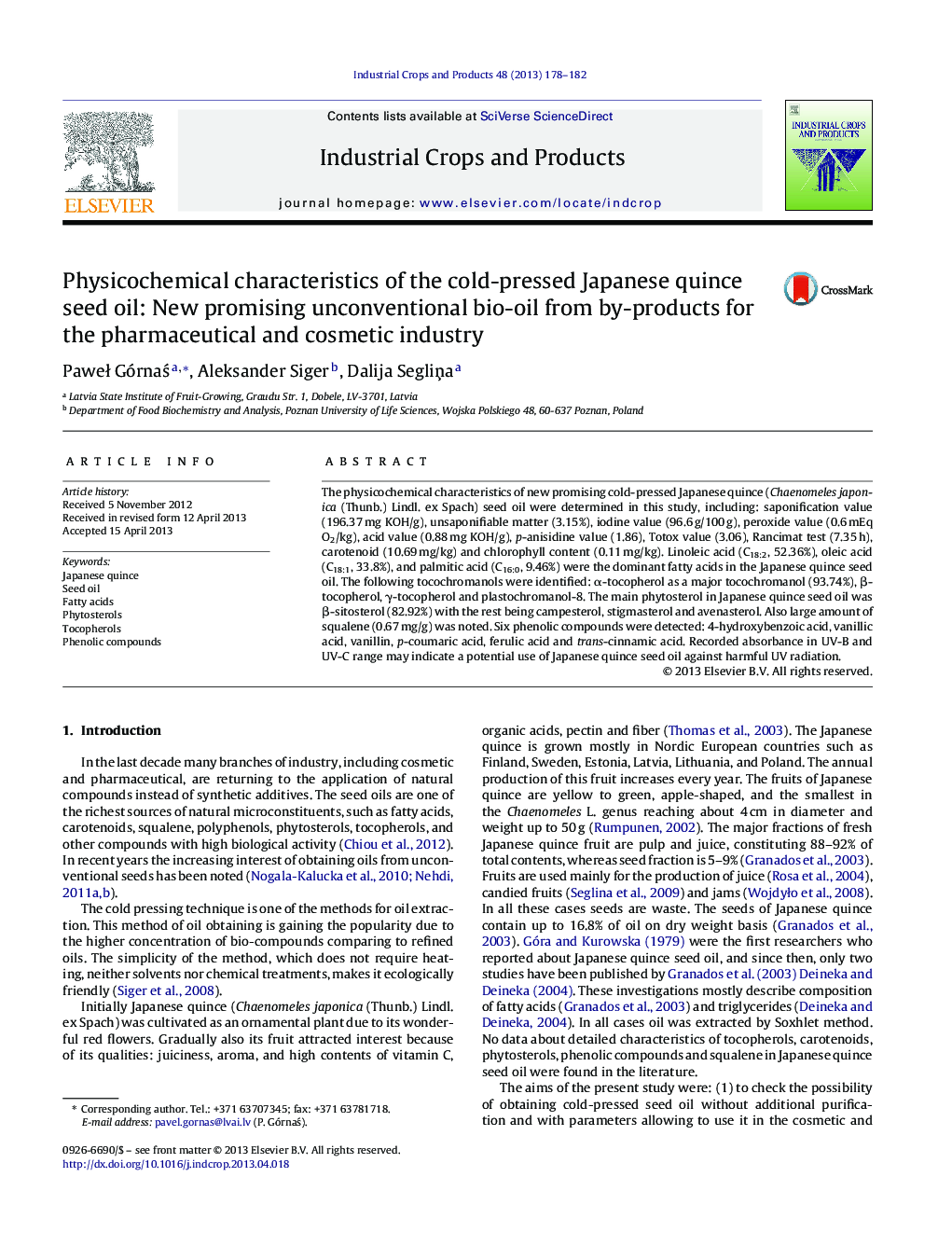| Article ID | Journal | Published Year | Pages | File Type |
|---|---|---|---|---|
| 4513793 | Industrial Crops and Products | 2013 | 5 Pages |
•The first report about cold pressed oil extracted from Japanese quince seed.•Physicochemical characterization of oil obtained from the by-products.•Japanese quince seed oil – rich source of α-tocopherol, phytosterols, and β-carotene.
The physicochemical characteristics of new promising cold-pressed Japanese quince (Chaenomeles japonica (Thunb.) Lindl. ex Spach) seed oil were determined in this study, including: saponification value (196.37 mg KOH/g), unsaponifiable matter (3.15%), iodine value (96.6 g/100 g), peroxide value (0.6 mEq O2/kg), acid value (0.88 mg KOH/g), p-anisidine value (1.86), Totox value (3.06), Rancimat test (7.35 h), carotenoid (10.69 mg/kg) and chlorophyll content (0.11 mg/kg). Linoleic acid (C18:2, 52.36%), oleic acid (C18:1, 33.8%), and palmitic acid (C16:0, 9.46%) were the dominant fatty acids in the Japanese quince seed oil. The following tocochromanols were identified: α-tocopherol as a major tocochromanol (93.74%), β-tocopherol, γ-tocopherol and plastochromanol-8. The main phytosterol in Japanese quince seed oil was β-sitosterol (82.92%) with the rest being campesterol, stigmasterol and avenasterol. Also large amount of squalene (0.67 mg/g) was noted. Six phenolic compounds were detected: 4-hydroxybenzoic acid, vanillic acid, vanillin, p-coumaric acid, ferulic acid and trans-cinnamic acid. Recorded absorbance in UV-B and UV-C range may indicate a potential use of Japanese quince seed oil against harmful UV radiation.
